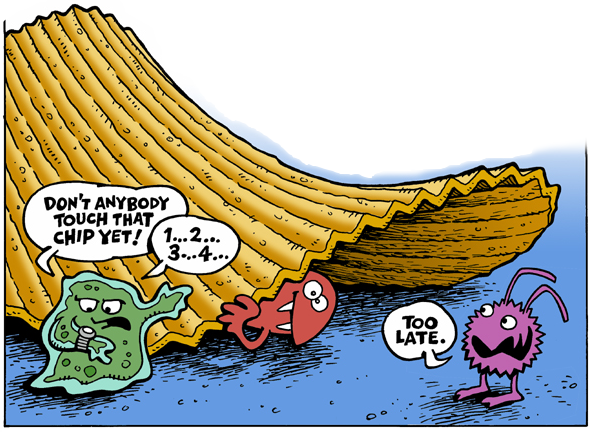-
Tips for becoming a good boxer - November 6, 2020
-
7 expert tips for making your hens night a memorable one - November 6, 2020
-
5 reasons to host your Christmas party on a cruise boat - November 6, 2020
-
What to do when you’re charged with a crime - November 6, 2020
-
Should you get one or multiple dogs? Here’s all you need to know - November 3, 2020
-
A Guide: How to Build Your Very Own Magic Mirror - February 14, 2019
-
Our Top Inspirational Baseball Stars - November 24, 2018
-
Five Tech Tools That Will Help You Turn Your Blog into a Business - November 24, 2018
-
How to Indulge on Vacation without Expanding Your Waist - November 9, 2018
-
5 Strategies for Businesses to Appeal to Today’s Increasingly Mobile-Crazed Customers - November 9, 2018
The Truth and Flaws of the Five-Second Rule
The “five-second rule” – a folkloric guideline on the time it is considered safe to eat food dropped on the floor – has been debunked by a new study.
Advertisement
Regarding his own eating practices, Schaffner told the New York Times: “I will tell you on the record that I’ve eaten food off the floor”, before adding, “If I were to drop a piece of watermelon on my relatively clean kitchen floor, I’m telling you, man, it’s going in the compost”. And while earlier studies gave the impression that food picked up a few seconds after hitting the floor was in better shape than treats that had been there for longer, lead food microbiologist Donald W. Schaffner found that even the shortest contact times could yield quite a few encounters with bacteria.
Technically, if you were to drop gummy candy on carpet, you would have slightly more time before contamination sets in than if you dropped watermelon on any other flooring.
“Bacteria don’t have legs, they move with the moisture, and the wetter the food, the higher the risk of transfer”. Back in 2007, researchers from Clemson University made a decision to see how well Salmonella typhimurium (one of the two major types of salmonella that cause food poisoning) could adhere to bologna and bread after it came in contact with carpet, wood, and tile floors.
According to the study, the bacteria are more likely to contaminate the foods rich in moisture, more watery the food more are the chances of its contamination. Bacteria adhered to the dropped food immediately, but the longer the food lingered, the more bacteria were transferred.
Advertisement
The doctor also mentioned that the food could be contaminated by bacteria instantaneously. But some bacterial contamination happened in less than a second. And some took less than a second. That’s because the big determining factor there is not just about how quickly it transferred, but also: What kind of bacteria are on your floor? Four contact times – less than one second, five seconds, 30 seconds and 300 seconds – yielded a total of 128 possible combinations that were replicated 20 times each for 2,560 measurements.





























